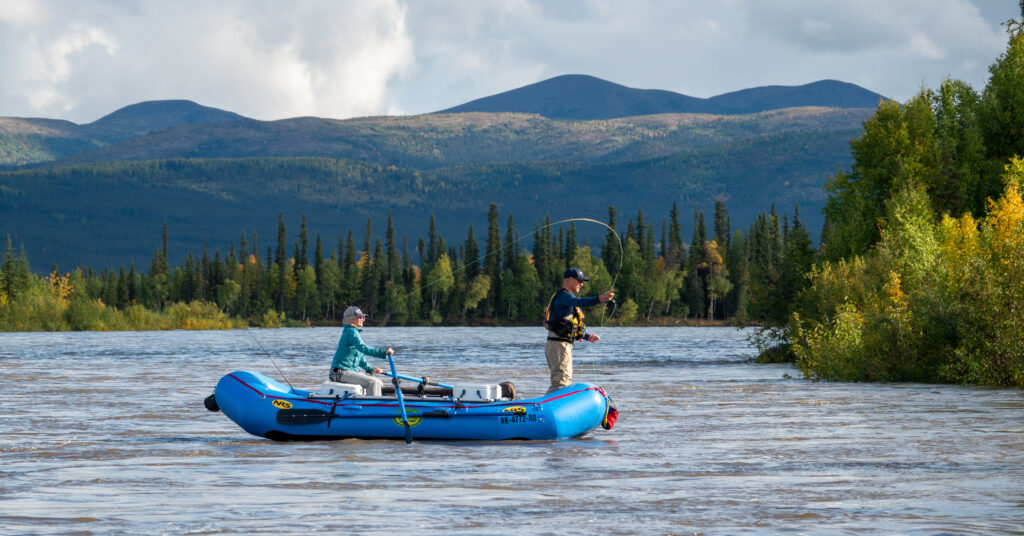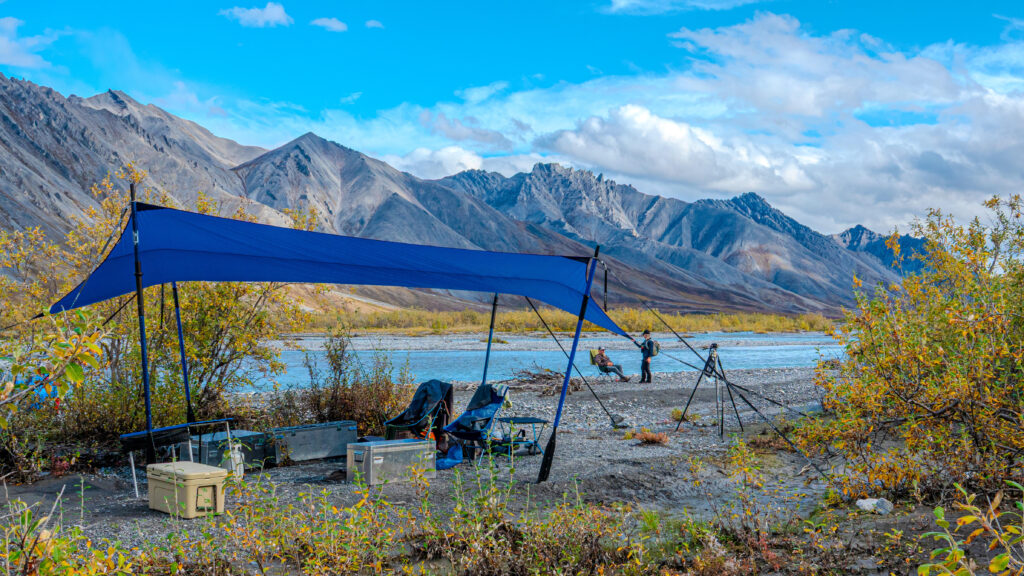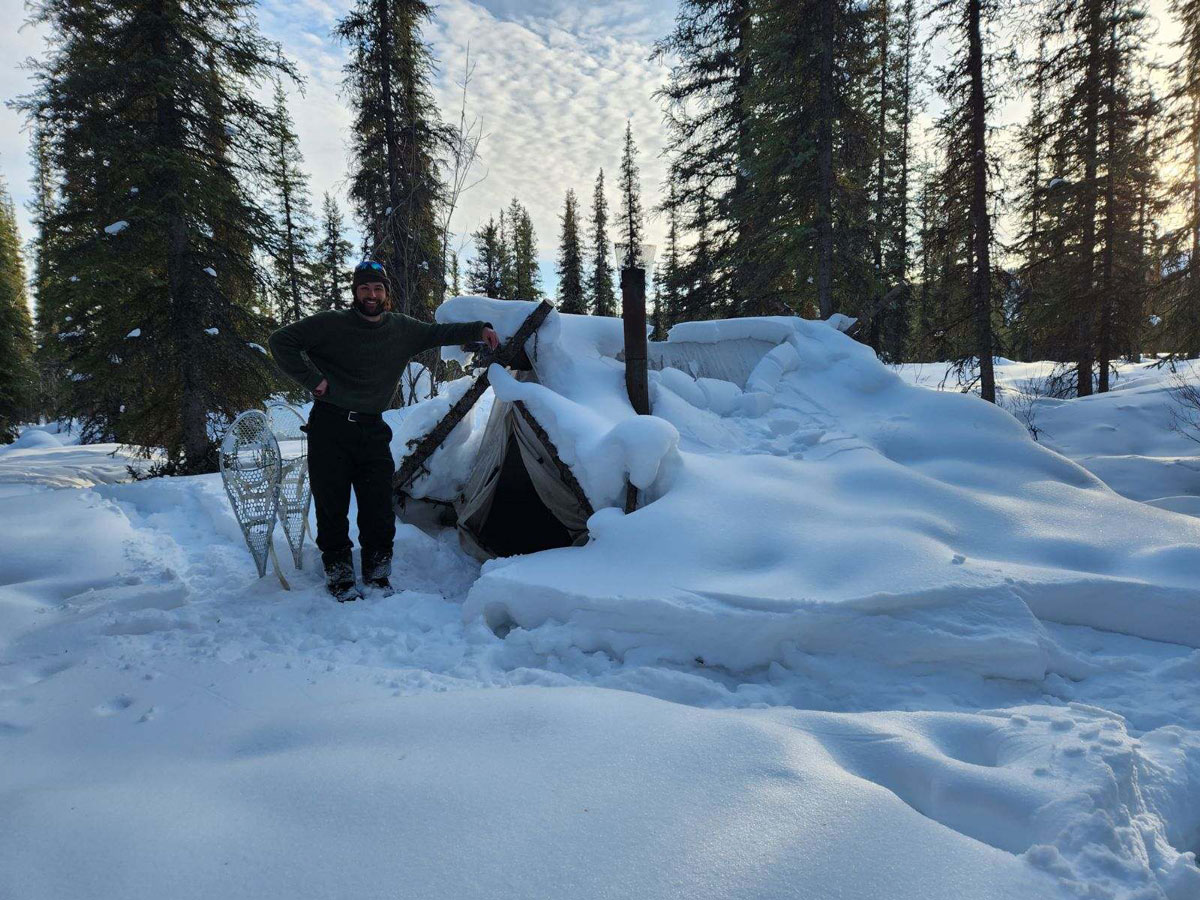The Ultimate Gear Guide and Packing List for a Hunting and Fishing Trip in Alaska’s Brooks Range
Plan your fly-in-and-float adventure through America’s most wild and remote hunting and fishing grounds

I’ve made a dozen trips to Alaska’s Brooks Range, spent a fair amount of time in the field elsewhere in the north, and tested many useful products over the last six years as the gear editor for Alaska Magazine. I’ve also talked to numerous experts who have experienced the Brooks themselves. This packing list is tailored to an August or September excursion, and I recommend using it as a guide to help research your own personalized gear system. Get ready: You’re in for the backcountry experience of a lifetime. -Bjorn Dihle
Tent
The sort of tent you want will depend on what kind of adventure you are planning and the time of the year. From June through August, I’d consider a 3- or 3.5-season tent for trips where weight is an issue. For the rest of the year, I’d only bring a 4-season tent. [Note: Some brands bill their tent as being 4-season but are not built to weather Alaska’s four seasons. Do your research.]
Here are my top picks:
- Best all-around ultralight tent: Big Agnes Copper Spur HV UL2
- Best light 3.5-season tent: First Lite’s Nemo Kodiak Tent
- For float or basecamp trips or trips outside of summer months: Eddie Bauer’s Katabatic, Mountain Hardwear’s Trango, and a few different Hilleberg tents—my favorite is the Nammatj GT. I’ve used all of these tents in brutal winter storms, sustained high winds, and pouring rain. They all performed well.
- If you’re interested in a lightweight tipi tent with a woodstove, check out Seek Outside.
- For winter or serious basecamp trips: The Alaska Gear Company’s Arctic Oven. I recommend the cabin style.
“This is big country, maybe bigger than you might realize from home. An airplane drop in the Brooks Range could turn into a trip for you that’s not only far away, but also back centuries or more. Bring a sharp knife. And your humility.”
– Seth Kantner, life-long resident of northwest Alaska and author of A Thousand Trails Home: Living with Caribou.

Backpack
There are a lot of good packs out there. I’m most partial to Stone Glacier, as their internal packs are ideal for hunting the brushy and steep country of where I live in Southeast Alaska. Mystery Ranch also makes very high-quality hunting packs. Some folks like external frame packs—I like them for packing moose but, overall, I’ll stick with my Stone Glacier.
Sleeping Bag
My best recommendation is that you bring a bag that uses Downtek, a water-repellent down fill. Treated down is way better than a synthetic or traditional down bag.
For temperature rating, make sure you have something appropriate for the time of the year you’re going. I recommend a 20-degree bag or colder for mid to late August trips. Consider a 0-degree or colder bag for September trips.
I’ve had good luck with Big Agnes bags in the past. I also like Kelty Cosmic Ultra 20 for its price and quality. A good sleeping bag system for colder times of the year takes more consideration—Wiggy’s is somewhere to start.
“Bring a high-quality sleeping bag that’s rated 10 to 20 degrees colder than you think you’d need.”
–Oliver Ancans, Air National Guard
Sleeping Mat
I like foam mats, such as this one by Nemo, but each person has their preferred comfort level. I like to place my outerwear between two mats for more insulation. If it’s going to be cold, consider pairing a foam mat with an inflatable mat – but make sure you bring a repair kit. Overall, Therm-a-rest makes the most reliable inflatable mats I’ve slept on.
If you’re considering a cot to minimize the morning aches, take a look at the lightweight models by Helinox.

Communication
Garmin makes the best two-way satellite communicators. I love my Garmin inReach Explorer and wish Garmin had not stopped making this model – I’m not a big fan of satellite phones. There’s still the inReach Mini 2, and Garmin told me their Montana 700 Series is similar to and even better than their inReach Explorer. I’ve yet to use that model, so I can’t comment on it.
The Starlink availability map shows that it covers the Brooks Range. This is very likely the way of the future for remote communication. That said, I haven’t used Starlink and the technology is pretty new. I would not use Starlink as my sole means of communication in the Brooks Range at this point.
“I highly recommend you bring an inReach so you can let people know you are OK. It is so remote that no other devices will work very effectively.”
– John Gaedeke, Owner of Iniakuk Wilderness Lake Lodge
Stove
My go-to stove for the Brooks is the MSR XGK EX Stove—it burns the hottest, uses different types of fuel, and is the easiest to clean. The MSR Dragonfly Stove is good if you want to expand your cooking options, since its heat is easier to control. The MSR Whisperlite is decent, too. Regardless of which stove you choose, make sure you bring an extra pump or two and that you know how to clean your stove.
While Pocket Rockets, WindBurners, and Jetboils can be convenient, you can’t always count on being able to get gas canisters up north. Call your air service ahead of time to figure out camp fuel possibilities.
Meat Care
I only use a lightweight pillowcase style, having learned the hard way early on in my hunting career that mesh game bags can lead to lots of fly eggs and even maggots in your meat. Argali offers a good range of high-quality game bags. Heavy game bags are not ideal for most backcountry hunts.
I also bring a small tarp to protect meat from rain. I carry several heavy-duty plastic garbage bags for lining my backpack while packing meat and for the bush flight out. I pack a couple of small knives, a small sharpener, and a lightweight bone saw.
Food Storage
Since the Brooks Range is so remote, I recommend being careful with your food storage so you don’t end up losing your provisions and having a real survival situation. It’s not just bears you have to worry about—foxes, ravens, and wolverines are also known to raid food.
I store my food using either canoe barrels or bear proof cans with my pots and dishes stacked on top to alarm me if an animal messes with my store. Ursack Bear Bags are also an option—just make sure yours is tied off to a tree.
“Ensure you give yourself extra time on each end of your trip, in case of weather delays.”
-Kelly Reynolds, Alaska Pilot, Hunter, and Trapper

Electric Bear Fence
You don’t necessarily need a bear fence, but the Brooks has a surprising number of grizzlies. They tend to be more inquisitive and, at times, aggressive than coastal brown bears. On one trip to the Brooks, in the middle of the night, I had a bear trample my tent—it woke me up to say the least. If you’re hunting, it’s more likely that you’ll want a fence to protect your meat than to string around your tent.
Eagle Enterprises has kits and parts to build a bear fence. [Note: Do not sleep inside an electric fence with meat.]
Water Purification System
There are many on the market, but I recommend Sawyer Squeeze Water Filtration System or Aquamira Drops. I often bring both.
First Aid Kit
Adventure Medical Kits makes good, lightweight kits tailored to backcountry hunting. I recommend packing extra Ibuprofen and athletic tape for blisters, rubs, and other issues. I also pack extra Pepto-Bismol tablets, Benadryl, and a topical antibiotic like Neosporin.
“Respect cold water and places where a bad fall could get you in trouble.”
– Bruce “Buck” Nelson, Retired Alaska Smoke Jumper, Hunter, and Adventurer

Watercraft
You may want an inflatable boat depending on the sort of adventure. There are some rental options in Anchorage, Fairbanks, or from a local outfitter. It might be worth just purchasing a boat depending on your future plans. If you’re going with a guide, they should already have a boat figured out if your trip warrants one.
- Alpacka Raft makes the best packrafts, which weigh as little as 6 pounds and take up a small portion of a big backpack on ultralight float hunts. Some models are designed specifically for hunting and fishing. There’s a saying that packrafts have redefined the way you can look at a map, and it’s entirely true.
- Pristine Ventures makes some good hunting and fishing rafts and canoes.
- NRS also makes good rafts.
- Aire makes a range of high-quality inflatable boats.
Rifle and Ammunition
I’ve hunted the Brooks with calibers ranging from .243 to .338 win mag—my favorite caliber. You can kill anything with that range of calibers and good shot placement, but I recommend considering a larger caliber if you’re hunting grizzly or moose. I generally bring 20 bullets to be safe – you’ll need more ammo than you think if your scope gets bumped in transit. If you’re bowhunting, fishing, or hiking, I recommend carrying a sidearm for bear protection. There are a lot of opinions out there. I carry a lightweight short-barrel Taurus .44 mag when I’m not packing a rifle.
Fishing Rod
If you’re not going to the Brooks to fish, the odds are you’ll have the opportunity to catch Arctic grayling. Consider bringing your fly rod. If space is a big issue, I recommend a collapsible spin rod.
Optics
The Brooks is big country, so I recommend bringing a good spotting scope. At least consider a lightweight pair of binoculars. Vortex and Maven have good options.
Trekking Poles
For hiking, expect to encounter everything from heavenly alpine tundra to hellish tussocks. Trekking poles can make a big difference, especially when hauling a heavy pack full of meat. I’ve been happy with my Leki poles.

Clothing
A good layering system is vital. I stick to fleece and synthetic materials, though some people like wool and fur. There’s no shortage of good brands of outdoor clothing to choose from. The Brooks can have a snow storm any month of the year, so be prepared with good, warm clothing. I strongly recommend a high-quality set of raingear, a puffy jacket, gloves, a neck gaiter, and a warm hat in addition to layers of fleece. Bring extra wool socks—I like Meindl’s, but I most often bring whatever Costco is selling. Also consider neoprene socks or a neoprene-wool hybrid sock.
“Bring rain gear, the best you can get.”
– Tom Phillips, Veteran Kobuk River Paddler
Boots and Waders
If you’re making a fishing trip to the Brooks, you probably already have your waders figured out. If not, I recommend a pair from Simms. Boots are more subjective. I recommend giving some thought to whatever boot system you decide to go with. Break in your boots beforehand.
Also consider bringing a good pair of gaiters if you’re going with leather boots. The Brooks Range makes for very wet and often uneven travel, largely due to tussocks. Keeping your feet healthy can be an issue. Wiggy’s lightweight thigh-high waders are popular with many. Strange as it might sound, I often travel the Brooks in sandals and neoprene socks during warmer months. I bring a lightweight pair of hiking shoes or boots for rougher mountain travel.
Drysuit
If you’re floating a river that has whitewater, or even if it is mostly flatwater, a drysuit can be a game changer – and even save your life. I have never used a drysuit in the Brooks, but I have packrafted a handful of rivers up there and several times I have gotten soaked and quite cold.
I have used and liked Kokatat drysuits. Just make sure yours is designed for paddling.
“An essential piece of gear I’d recommend for someone planning their first wilderness trip to the area, if they will be spending time on the water, is a drysuit. Rain, snow, wind, and cold water can lead to hypothermia, even during the summer months, and a drysuit will keep you as happy as a duck in a storm through the worst weather.”
– Kevin Fraley, Fisheries Ecologist
Camera
My best advice for a trip to the Brooks might be to get a good camera before going. You’re very likely to see some incredible things. My camera of choice is a Sony RX10 iii or IV. I like it because it’s relatively lightweight and has a 24-600mm lens. There are a lot of other great cameras out there that might be a better fit for what you want, but the Sony RX10 is the one I’ve settled on.
“Not once but twice I found myself in the middle of the caribou migration. Hundreds of thousands of caribou walking just feet away. The first time it happened, I only had a little Kodak film camera. The next day I ordered a real camera. I had just experienced something truly majestic and didn’t have the right gear to capture it. The second time it happened, I still only had my phone camera. It was snowing and the pictures didn’t turn out great, but I did get a little video. Buy – and pack – the best camera you can afford.”
Lewis Pagel, Hunter and Owner of Arctic Fishing Adventures

Miscellaneous Items
- Bug net and bug dope
- A light pair of gloves
- Sunglasses – it can snow at any time of year and snow blindness is very real
- Carpet thread and some stout sewing needles – I’ve lost track of the number of times this has saved me when things like tents, clothing, and sleeping bags have torn.
- Boat patch repair kit
- Extra lighters and good fire starter
- Extra cord and webbing
- Small tarp
- Tent-pole repair kit
- Leatherman or similar multi-tool
- One or two 5-gallon collapsible water jugs
- Headlamp – granted, there’s light 24 hours a day from late May through mid-August
- Sunblock
- A small roll of duct tape
Sign up for Hunters & Anglers for the Brooks Range updates here.



